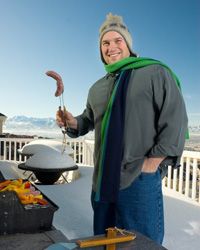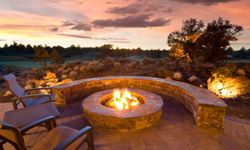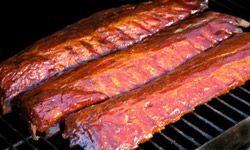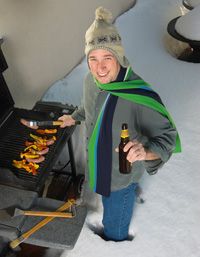When we think of grilling, we think of relaxed folks lounging in the backyard in perfect summer weather. They share conversation. They sip cool drinks. Their mouths water at the aroma of the cooking food. Occasionally, the chef flips, bastes or checks the food on the grill.
Americans love to grill. When it's done right, grilling doesn't just produce tasty food: Because the fat cooks away, grilled foods tend to be healthy foods. In addition, grilling seems to turn cooking into a social event.
Advertisement
Despite the sad fact that it's not always summer and the weather is often far from perfect, people are grilling in all seasons. Market research shows that nearly 40 percent of American households say they grill year-round. That's nearly twice as many as 20 years ago [source: Cascade Cattleman].
Maybe you want to be prepared in case a shower threatens your planned summer cookout. Maybe you're just a hardy soul who's determined to grill come snow, sleet, cold or rain. But whether you find yourself grilling in inclement weather by choice or misfortune, don't despair. You can minimize the discomfort and maximize the pleasure. Read on for some useful tips on how to do it.





